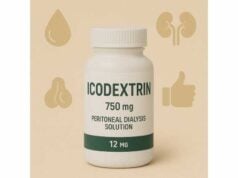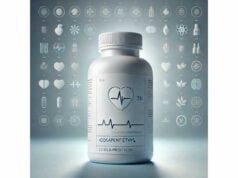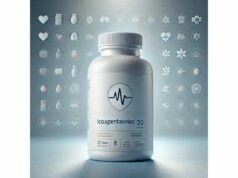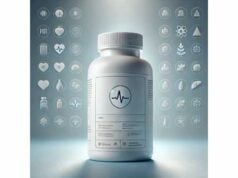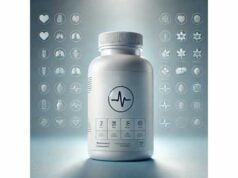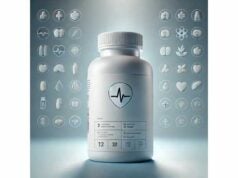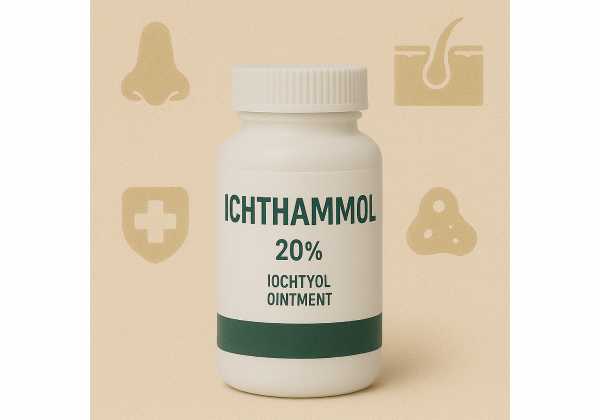
Ichthammol—also called ammonium bituminosulfonate—is a traditional, tar-derived topical ingredient used for inflamed skin and minor infected lesions. In dermatology, it appears in pastes, ointments, and paste bandages, often alongside zinc oxide or emollients. People reach for it to calm itchy eczema patches, soothe painful boils, help “draw” fluid from furuncles, and soften thick, tense skin. Modern lab studies have renewed interest in its antimicrobial and anti-inflammatory actions, including activity against Staphylococcus aureus and effects on innate immune signaling. Practical advantages include low cost, simple application, and availability in multiple strengths. At the same time, safe use depends on realistic expectations, correct dosing frequency, and awareness of local irritation or allergy risks. This guide distills what ichthammol is, when it helps, how to apply it, and which precautions matter most—so you can discuss options with your clinician and use it confidently at home.
Quick Facts
- Helps soothe inflamed, itchy skin and may assist drainage in boils and furuncles.
- Demonstrates in-vitro antibacterial effects against Staphylococcus aureus and anti-inflammatory activity.
- Typical community use: 1%–10% in pastes or ointments, applied once or twice daily; drawing salves may use 20%.
- Avoid if you have known sensitivity to ichthammol, lanolin, or petrolatum, or on broken skin unless advised.
- People with extensive infection, fever, or worsening pain should seek medical care rather than self-treat.
Table of Contents
- What is ichthammol and how it works
- Proven and possible benefits
- How to use it safely at home
- Dosage forms and typical strengths
- Side effects, warnings, who should avoid
- Evidence: what studies show
What is ichthammol and how it works
Ichthammol (ammonium bituminosulfonate) is a sulfonated shale-oil distillate neutralized with ammonia. In practical terms, it is a dark, viscous, water-miscible substance that blends into ointments, pastes, and impregnated bandages. It has a faint tar-like odor, spreads easily with petrolatum, and softens further with body heat, which helps it stay in place under dressings.
Mechanistically, ichthammol is best described as multi-modal:
- Keratolytic and “skin-loosening” effects: In reconstructed 3D skin models, ammonium bituminosulfonate alters barrier protein expression and increases permeability in a concentration-dependent manner. Clinically, this can feel like softening of tight, inflamed skin, which may make thick or tense lesions less painful and easier to drain when indicated by a clinician.
- Anti-inflammatory activity: In vitro studies suggest reductions in neutrophil-derived mediators relevant to inflammatory skin conditions. By modulating chemotactic signals, proteases, and reactive oxygen species, ichthammol may blunt the cascade that underlies tenderness, swelling, and redness.
- Antimicrobial activity: Sodium/ammonium bituminosulfonate demonstrates bactericidal effects against Staphylococcus aureus—including methicillin-resistant strains—in laboratory assays, with rapid kill at higher multiples of the minimum inhibitory concentration. While test-tube results do not guarantee clinical cure, they help explain why some clinicians use ichthammol as a supportive, local measure on minor lesions.
- Osmotic “drawing” behavior: The classic “drawing salve” reputation likely reflects a combination of mild keratolysis, hydration under occlusion, and hyperosmotic pull from the vehicle, which together can promote superficial fluctuation and spontaneous drainage in small furuncles once they are ready to drain.
Formulations differ in color and concentration. “Dark” preparations are commonly used for boils and furuncles; “pale” sulfonated shale-oil creams appear in atopic dermatitis research. Paste bandages impregnated with zinc oxide ± ichthammol are used under professional guidance for itchy, lichenified eczema on limbs.
Key takeaways: ichthammol is not a systemic antibiotic or a cure-all, but as a topical adjunct it can calm inflammation, soften tense skin, and support local care of selected lesions—especially when paired with cleansing, warm compresses, and, when needed, clinician-performed incision and drainage.
Proven and possible benefits
1) Comfort for inflamed, itchy skin. Patients with eczema often report fast itch relief after applying zinc-and-ichthammol paste under a secondary bandage. Occlusion helps break the itch–scratch cycle, while ichthammol’s soothing, mildly keratolytic action can reduce the feeling of tight, burning skin. On flexural or lichenified plaques, this can make daily tasks more comfortable and reduce nocturnal scratching.
2) Supportive care for boils and furuncles. For small, early boils without systemic symptoms, a short course of ichthammol ointment with warm compresses may help lesions come to a head. Once fluctuant, proper drainage—often in clinic—addresses pain and speeds recovery. Ichthammol should not replace evaluation when lesions are large, spreading, or accompanied by fever.
3) Adjunct for hidradenitis suppurativa (HS). Case-based dermatology reports describe ichthammol 10% ointment as a local, short-term option to encourage passage of purulent material from acute HS nodules. It is not a disease-modifying therapy; rather, it serves as a low-risk adjunct for symptomatic flares alongside standard HS regimens (topical antiseptics, intralesional steroids, systemic agents, procedures).
4) Potential antimicrobial contribution. Laboratory work has shown bactericidal activity against S. aureus, including MRSA, at defined concentrations. In practice, this suggests a helpful “stacking” effect with cleansing and occlusion. Still, clinicians treat overt infection according to guidelines—ichthammol does not substitute for incision and drainage or appropriate systemic antibiotics when indicated.
5) Rosacea-relevant pathways. Experimental data with sodium bituminosulfonate show modulation of neutrophil pathways tied to rosacea inflammation (e.g., kallikrein-related proteolysis, LL-37 signaling). While this is mechanistic rather than clinical-endpoint evidence, it broadens the plausible biologic scope beyond boils and eczema.
6) Practical upsides. Ichthammol products are generally affordable, easy to layer with emollients, and simple to remove with gentle cleansing. Because they are topical, they avoid systemic drug interactions, and adverse effects are usually limited to local irritation or rare contact sensitivity.
7) Where claims outrun data. Enthusiasm online sometimes exceeds evidence. For splinters deeply embedded, cystic acne nodules, or extensive cellulitis, ichthammol alone is unlikely to solve the problem. It is best framed as a supportive topical—not a stand-alone cure—for select, localized issues.
How to use it safely at home
Before you start
- Choose a product that clearly lists ichthammol (ammonium or sodium bituminosulfonate) with the percentage strength.
- Patch test a pea-sized amount on the inner forearm for 24 hours if you have sensitive skin or a history of contact allergy.
- Gather supplies: mild cleanser, clean gauze, non-stick pads, and tape or a secondary bandage.
For itchy eczema plaques (non-infected)
- Gently cleanse and pat dry.
- Apply a thin layer of 1%–5% ichthammol paste or zinc-ichthammol paste to the target area.
- Cover with a non-stick pad and a light secondary wrap (or a paste bandage applied by a trained clinician).
- Leave in place for several hours or overnight. Remove, cleanse, moisturize, and reapply once daily as advised.
- Limit to focal areas; for widespread eczema, discuss a structured plan with your clinician.
For small, early boils or furuncles (no fever, not spreading)
- Cleanse and apply warm compresses for 10–15 minutes.
- Spread a thin layer of ichthammol ointment (often 10%–20%) over the center; cover with gauze.
- Replace twice daily. If pain, swelling, or redness worsens—or if you see streaking, fever, or malaise—stop self-care and seek medical attention.
- Do not attempt to lance lesions at home; drainage should be done by a professional when indicated.
For hidradenitis lumps
- Discuss with a dermatologist. Short-term, localized application of 10% ointment may be used between clinic visits to reduce pressure and discomfort.
- Continue your background HS regimen and hygiene measures (antiseptic wash, antiperspirant where appropriate, clothing friction reduction).
Removal and clean-up
- Ointments can stain fabrics. Use older clothing and pillowcases, and protect bedding.
- To remove residue, massage with a bland emollient or cleansing oil, then wash with lukewarm water and mild cleanser.
When to escalate care immediately
- Spreading redness, severe tenderness, rapidly enlarging swelling, or fever.
- Lesions on the face near the nose or eyes, in the groin with severe pain, or recurrent abscesses.
- Suspicion of a retained foreign body that does not surface within a day or two.
Dosage forms and typical strengths
Common retail and prescription options
- Ointments (“drawing salves”): Frequently 10%–20% ichthammol in petrolatum ± lanolin. Community directions often suggest application once or twice daily under gauze until the lesion softens or drainage is achieved in clinic.
- Pastes and paste bandages: Zinc oxide with 1%–10% ichthammol, used on lichenified or very itchy eczematous skin under clinician guidance. These may be left on for several hours or overnight and repeated daily for short courses.
- Creams (pale sulfonated shale oil): Research formulations around 4% have been studied for atopic dermatitis in children under dermatology supervision.
Choosing a strength
- 1%–5%: Mild eczema plaques or areas prone to irritation (flexures, pediatric use under guidance).
- 10%: Localized inflamed lesions, tender plaques, or HS nodules to reduce pressure between visits.
- 20%: Heavier “drawing” ointments for small boils or painful, tense furuncles—short courses only.
How much to apply
- A thin, shiny film is adequate; thicker layers rarely improve outcomes and increase mess and staining.
- A practical rule: a fingertip unit (from the distal finger crease to fingertip) covers approximately 2% body surface on an adult hand-size area.
Frequency and duration
- Typical frequency: once or twice daily.
- Duration: 2–7 days for boils or HS nodules under watchful self-care; 1–2 weeks of intermittent use for itchy plaques, reassessing response regularly.
Compatibility and layering
- Can be layered over bland emollients; apply ichthammol after the moisturizer to lock it in place.
- If a clinician prescribes topical steroids, apply steroid first to clean skin, allow a few minutes to absorb, then apply ichthammol to the target area and cover if instructed.
Special application: paste bandages
- Paste bandages impregnated with zinc oxide ± ichthammol are typically applied by trained staff for limbs with stubborn eczema. The method involves pleating to accommodate swelling and to avoid constriction. These dressings are left in place according to local protocol and patient comfort, then replaced on a schedule set by the dermatology team.
Side effects, warnings, who should avoid
Common, usually mild
- Transient stinging, mild burning, or warmth on application.
- Local irritation or maceration if applied too thickly or under occlusion for long periods.
- Fabric staining and persistent residue on clothing or bedding.
Less common
- Allergic contact dermatitis to ichthammol or to base ingredients like lanolin. Symptoms include increased redness, itch, or a new rash extending beyond the treated area. Stop the product and ask a clinician about patch testing if this occurs.
Situations where self-care is not appropriate
- Large, deep, or rapidly spreading infections; any lesion with fever, systemic illness, or red streaks.
- Facial “danger triangle” (bridge of nose to corners of mouth) lesions, which require medical evaluation.
- Immunocompromised status (e.g., chemotherapy, uncontrolled diabetes) where infection risk is higher.
- Chronic wounds (e.g., venous leg ulcers) need a structured plan—compression, cleansing, debridement—led by a specialist team.
Drug and product interactions
- Topical combinations are generally safe; however, avoid mixing with multiple fragranced or exfoliating products that may increase irritation.
- If using prescription topicals (retinoids, calcineurin inhibitors, potent steroids), discuss sequencing with your clinician.
Pregnancy and breastfeeding
- Limited modern safety data exist; topical use over small areas is generally considered low risk, but discuss with your obstetric or pediatric clinician, especially if treating larger areas or broken skin.
Children
- Pediatric use should be conservative and focused on small areas, preferably under clinician guidance. For widespread eczema, emollients and guideline-directed anti-inflammatory therapy remain first line.
Allergy, asthma, fragrance sensitivity
- Many ointments include petrolatum and sometimes lanolin. If you are lanolin-sensitive, select lanolin-free versions. Stop if wheezing, hives, or significant swelling occurs, and seek urgent care for any signs of anaphylaxis.
Practical safety habits
- Label and date the tube on first opening; discard if odor or texture changes markedly.
- Do not share ointments across household members to avoid contamination.
- Keep away from eyes and mucous membranes; rinse thoroughly if accidental contact occurs.
Evidence: what studies show
Mechanism and barrier effects. On reconstructed human 3D skin models, ammonium bituminosulfonate ointments produced concentration-dependent “skin-loosening,” with altered expression of structural proteins (e.g., filaggrin, laminin) and increased permeability. These findings align with the clinical impression that ichthammol softens tight, inflamed skin and may facilitate drainage of superficial lesions when appropriately managed.
Antimicrobial findings. Laboratory studies demonstrate bactericidal activity of sodium bituminosulfonate against S. aureus, including MRSA, with rapid kill kinetics at higher multiples of MIC. While in-vitro results cannot be directly equated to clinical cure, they support the topical adjunct concept—especially when combined with cleansing, occlusion, and, if needed, incision and drainage.
Inflammation pathways. Research on rosacea-relevant pathways shows that sodium bituminosulfonate can reduce neutrophil-generated mediators (e.g., effects related to 5-lipoxygenase and kallikrein-5/LL-37 axes). These mechanistic signals help explain perceived calming of redness or tenderness in inflamed lesions, though targeted clinical trials are still needed.
Clinical outcomes and use-cases.
- Eczema: Pale sulfonated shale-oil creams have been studied in children with mild-to-moderate atopic dermatitis, showing benefit versus vehicle in older trials. In modern practice, paste bandages with zinc ± ichthammol are used within dermatology services to cool, protect, and reduce itch on lichenified limbs while a full eczema plan is implemented.
- Boils/furuncles: Patient-education resources and clinical handouts often include ichthammol as a “drawing” adjunct for small lesions, with the caveat that worsening signs demand medical care.
- Hidradenitis suppurativa: A case series and systematic review summarized topical ichthammol 10% as a localized, symptomatic measure—useful for short courses to reduce pressure and encourage discharge, but not a replacement for HS disease-modifying regimens.
Bottom line for evidence quality. Modern mechanistic and microbiology studies are stronger than the clinical trial base, which remains limited and heterogeneous. For today’s user, ichthammol is best positioned as a low-cost, supportive topical—most helpful for focused problems (itchy plaques, small boils, tender HS nodules) and best used under a broader, guideline-informed plan.
References
- In vitro investigation of the principle of action of ammonium bituminosulfonate ointments on a 3D skin model 2022 (Mechanism).
- Bactericidal Activity of Sodium Bituminosulfonate against Staphylococcus aureus 2022 (Microbiology).
- Sodium Bituminosulfonate Used to Treat Rosacea Modulates Generation of Inflammatory Mediators by Primary Human Neutrophils 2021 (Mechanistic Clinical Context).
- Efficacy of topical ichthammol 10% for hidradenitis suppurativa: Case series and systematic review of its use in dermatology 2020 (Systematic Review/Case Series).
- Paste Bandages 2022 (NHS Patient Guidance).
Medical Disclaimer
This guide provides general educational information about ichthammol and is not a substitute for professional medical advice, diagnosis, or treatment. Do not ignore or delay seeking personalized care from a qualified clinician because of something you read here. For spreading infection, severe pain, fever, or lesions on the face or near the eyes, seek urgent medical attention. Always follow local medical guidance and product labeling.
If this article helped you, please consider sharing it on Facebook, X (formerly Twitter), or your preferred platform, and follow us for future updates. Your support encourages us to continue creating high-quality, people-first health content.

